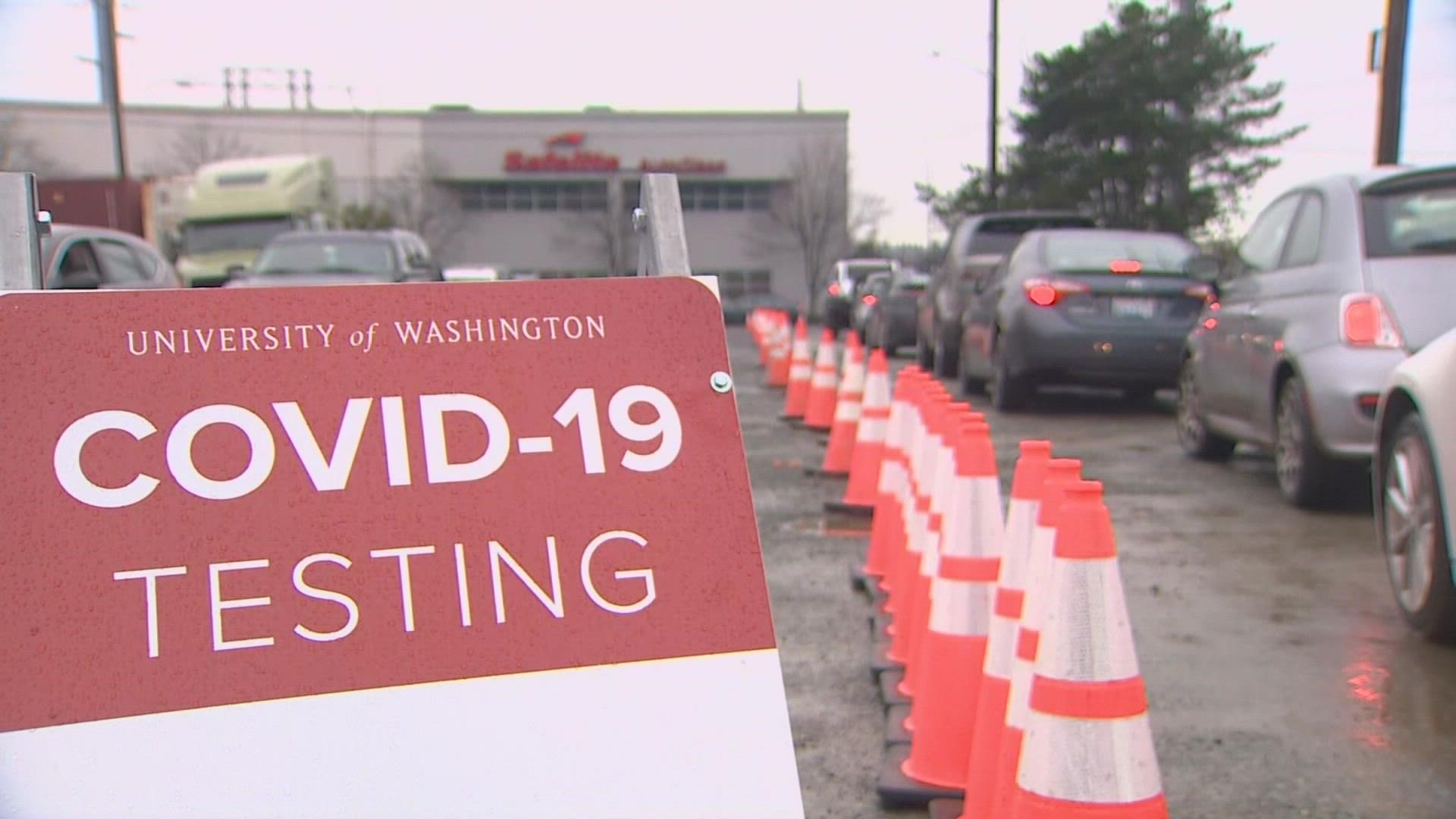SEATTLE — UW Medicine is reducing COVID-19 testing availability at nine testing sites and temporarily closing three other community testing locations in western Washington due to high positivity rates.
Starting Jan. 4, 2022, UW Medicine will limit COVID-19 testing appointments to people who are experiencing symptoms of a respiratory illness or those who have a known positive exposure to the virus, Dr. Geoff Baird, the chair of laboratory medicine and pathology at the University of Washington School of Medicine, said Thursday.
The three community COVID-19 testing locations in Ballard, Sammamish and Seattle City Hall will temporarily close until positivity rates go down. Once the positive rates decrease, Baird said the testing sites will reopen.
"Because each positive sample must undergo additional testing, the recent surge in positive tests limits the total number of samples that we can handle.," UW Medicine said in a statement.
The reduced testing availability was announced early so people who currently have appointments wouldn’t get cut off if they needed a test.
The positivity rate at the county’s Auburn COVID-19 site was 49% on Tuesday, which Baird said was “just astronomically high compared to where we have been.”
“In between surges we have oftentimes seen sites across Seattle at 5-10% positive,” said Baird. “At previous peaks, we have seen positive rates at 20-25%.”
Baird said the reason the high positivity rate is important is because UW Medicine tests COVID-19 samples by “pooling,” which he said is a common practice at labs across the county to increase capacity.
Baird said pooling involves taking a small portion of four or five samples and mixing them into one sample and then testing that one sample for COVID-19. If a pool sample is positive, each sample in that pool is taken and tested individually to see which sample, or samples, was positive.
“If that one [combined] sample was negative, all of those samples would be considered negative because the test is extremely sensitive,” explained Baird. “So, we really would have done the work of four tests, or five tests, with just one test.”
The problem when the positive test rate gets high, Baird said, is that when all of the pool tests are positive, they can’t do pooling anymore which decreases capacity and increase the time it takes to get test results.
“We will have to pause taking appointments for people without symptoms, including before travel or gatherings etcetera, until the positive rate decreases,” said Baird.
UW Medicine has been receiving around 10,000-15,000 COVID-19 samples a day for most of December, with a peak before Christmas of around 20,000 test samples. According to Baird, UW Medicine will “probably only have the capacity for somewhere between 8,000-12,000 tests a day, so we will have to limit that.”
Baird said more test samples could be accepted but explained UW Medicine would not be able to get to them “in a meaningful time.” UW Medicine has been targeting and hitting a 24-hour turnaround time for tests during most of the pandemic. But Baird said the turnaround time the past few days has sometimes exceeded two days.
“Medically speaking, a COVID test that is not back for several days, it just isn’t terribly meaningful because someone could go on and spread the virus, and they wouldn’t have the important information they need to make a decision whether or not to quarantine or whether or not close contacts should isolate," he said.
Baird said the most recent overall average positivity rate for Seattle and King County is around 25%. That average needs to be below 10-15% for UW Medicine to “operate at full strength.”
Chief Science Officer for the Washington State Department of Health (DOH) Dr. Tao Kwan-Gett responded to the news at UW MEdicine during a briefing, saying, "While testing capacity at any lab is a cause for concern, I think the overall main metric we're following, which is the percentage of cases that are Omicron, is something we'll be able to continue."
Baird said the data coming from the testing sites is monitored each day and the positivity rate could change quickly.
“This isn't an announcement I'd like to make, and we’re going to be trying to get back to our normal testing capacity as soon as we can,” said Baird. “We are in the midst of the worst public health disaster in the history of humanity, in terms of raw numbers of people that have been affected and people that have died, so it's important to remind ourselves - this isn't really an inconvenience. This is a serious health problem.”
To date, UW Medicine has tested over 4 million COVID-19 samples from community testing sites and across the state.
The DOH is also reminding Washingtonians that tests are available at various other health care providers, pharmacies and are being offered by community organizations. Those who are looking to get tested ahead of travel or are asymptomatic with no known exposure should seek at-home tests to ease the burden on testing sites, Deputy Secretary for COVID Response Lacy Fehrenbach said.

